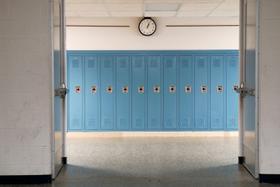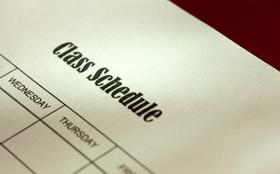Top Rankings
Royal Oak Schools School District ranks among the top 20% of public school district in Michigan for:
Category
Attribute
Overall Rank
Highest overall rank (Top 20%)
Reading/Language Arts Proficiency
Highest reading/language arts proficiency (Top 20%)
Science Proficiency
Highest science proficiency (Top 20%)
Community Size
Largest student body (number of students) (Top 1%)
For the 2025 school year, there are 3 public preschools serving 1,339 students in Royal Oak Schools School District. This district's average pre testing ranking is 9/10, which is in the top 20% of public pre schools in Michigan.
Public Preschools in Royal Oak Schools School District have an average math proficiency score of 52% (versus the Michigan public pre school average of 32%), and reading proficiency score of 65% (versus the 40% statewide average).
Minority enrollment is 20% of the student body (majority Black), which is less than the Michigan public preschool average of 39% (majority Black).
Overview
This School District
This State (MI)
# Schools
9 Schools
1,089 Schools
# Students
4,801 Students
372,198 Students
# Teachers
320 Teachers
24,811 Teachers
Student : Teacher Ratio
15:1
15:1
Student By Grade
District Rank
Royal Oak Schools School District, which is ranked within the top 20% of all 851 school districts in Michigan (based off of combined math and reading proficiency testing data) for the 2022-2023 school year.
The school district's graduation rate of 92% has increased from 84% over five school years.
Overall District Rank
#132 out of 866 school districts
(Top 20%)
(Top 20%)
Math Test Scores (% Proficient)
(22-23)43%
35%
Reading/Language Arts Test Scores (% Proficient)
58%
45%
Science Test Scores (% Proficient)
50%
38%
Graduation Rate
(22-23)92%
81%
Students by Ethnicity:
Diversity Score
0.44
0.58
% American Indian
n/a
1%
% Asian
2%
3%
% Hispanic
6%
9%
% Black
11%
21%
% White
74%
61%
% Hawaiian
n/a
n/a
% Two or more races
7%
5%
All Ethnic Groups
District Revenue and Spending
The revenue/student of $17,482 in this school district is less than the state median of $18,510. The school district revenue/student has stayed relatively flat over four school years.
The school district's spending/student of $18,783 is higher than the state median of $17,693. The school district spending/student has stayed relatively flat over four school years.
Total Revenue
$84 MM
$25,476 MM
Spending
$90 MM
$24,351 MM
Revenue / Student
$17,482
$18,510
Spending / Student
$18,783
$17,693
Best Royal Oak Schools School District Public Preschools (2025)
School
(Math and Reading Proficiency)
(Math and Reading Proficiency)
Location
Grades
Students
Rank: #11.
Northwood Elementary School
(Math: 70% | Reading: 75%)
Rank:
Rank:
10/
Top 5%10
926 W 12 Mile Rd
Royal Oak, MI 48073
(248) 541-0229
Royal Oak, MI 48073
(248) 541-0229
Grades: PK-5
| 446 students
Rank: #22.
Keller Elementary School
(Math: 44% | Reading: 63%)
Rank:
Rank:
9/
Top 20%10
1505 N Campbell Rd
Royal Oak, MI 48067
(248) 542-6500
Royal Oak, MI 48067
(248) 542-6500
Grades: PK-5
| 450 students
Rank: #33.
Addams Elementary And Ecc
(Math: 40-44% | Reading: 55-59%)
Rank:
Rank:
8/
Top 30%10
2222 W Webster Rd
Royal Oak, MI 48073
(248) 288-3100
Royal Oak, MI 48073
(248) 288-3100
Grades: PK-5
| 443 students
Recent Articles

The Link Between Education and Incarceration: The NAACP Report
Education and the rate of incarceration have been linked in a recent NAACP report. Learn about the report and the troubling findings.

The Debate Over Mandatory AP Exams: Balancing Academic Rigor and Student Well-being
Some public schools are forcing students in AP courses to take the AP exam. Here's a look at both sides of the debate and the potential benefits in store for both students and high schools.

The 15 Biggest Failures of the American Public Education System
The world is in a constant state of change and those who fail to adjust fall behind. Unfortunately, the American public education system has not kept up with the times and is currently facing a number of serious problems. Keep reading to learn about the biggest failures affecting the modern U.S. public education system as well as some of the trends that could spark change.





